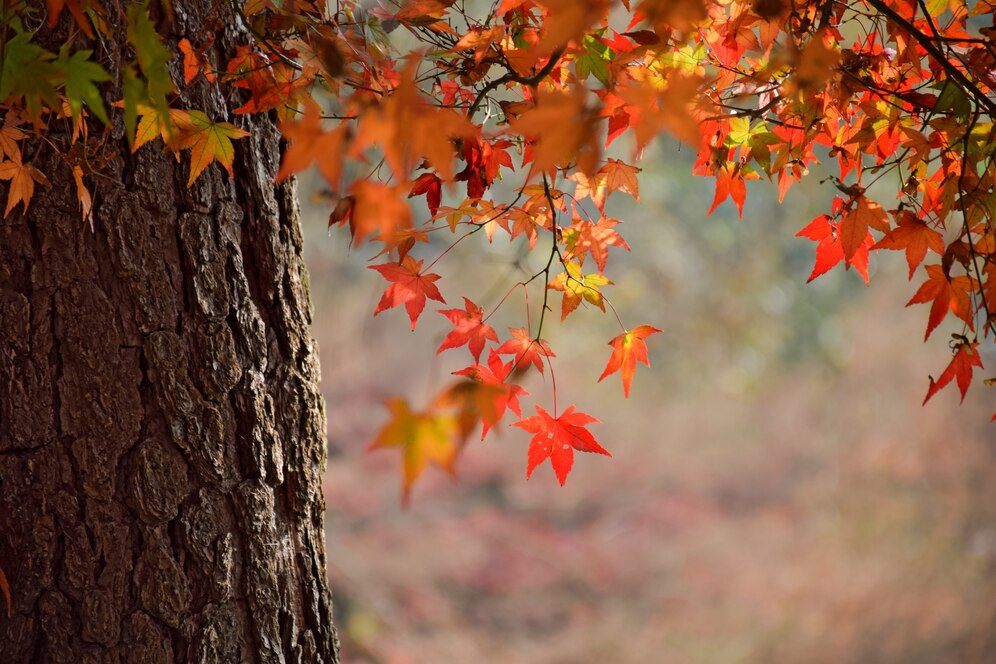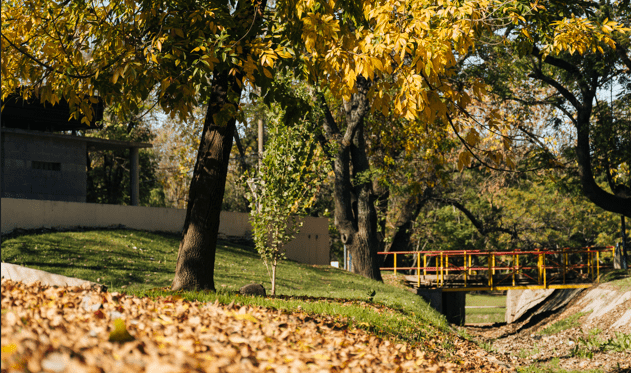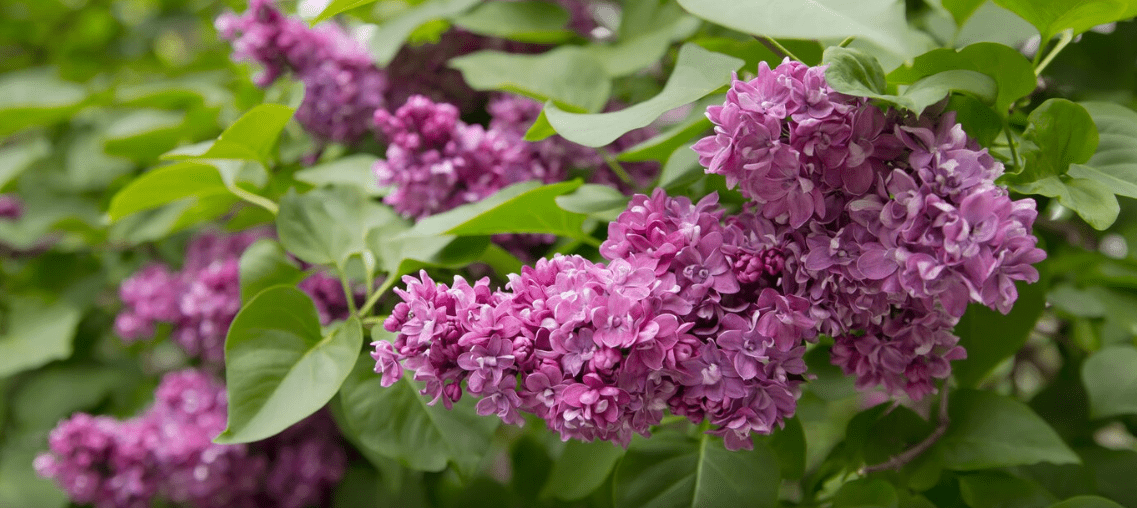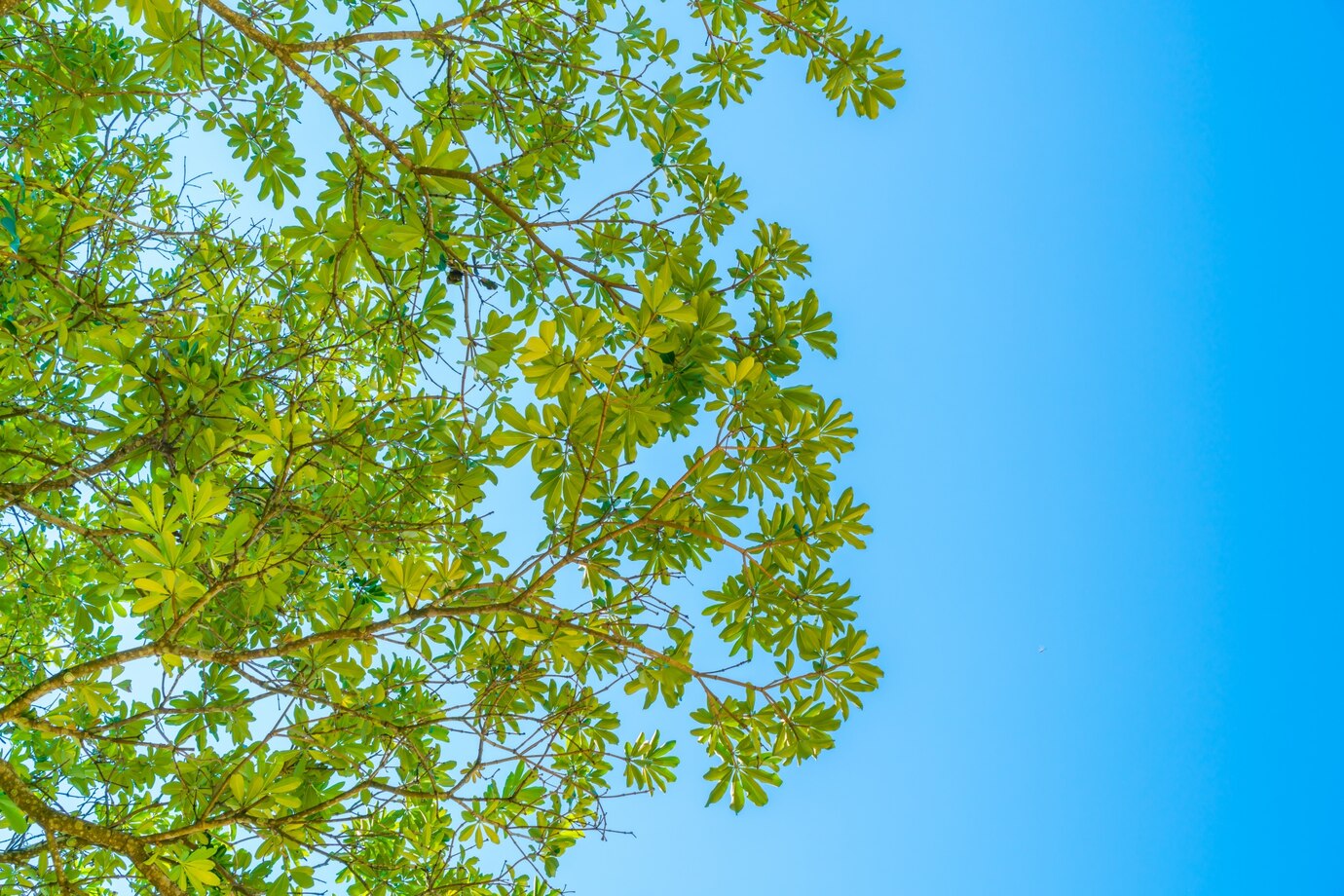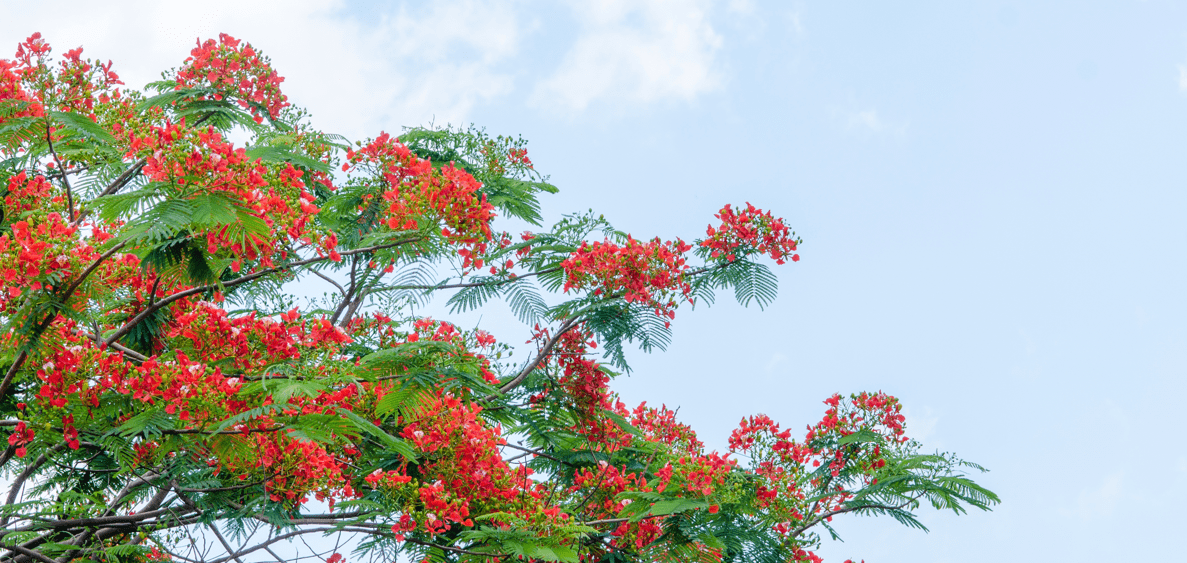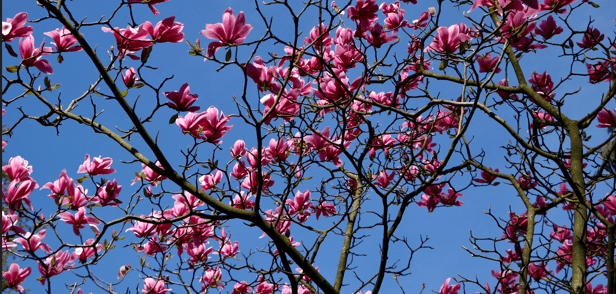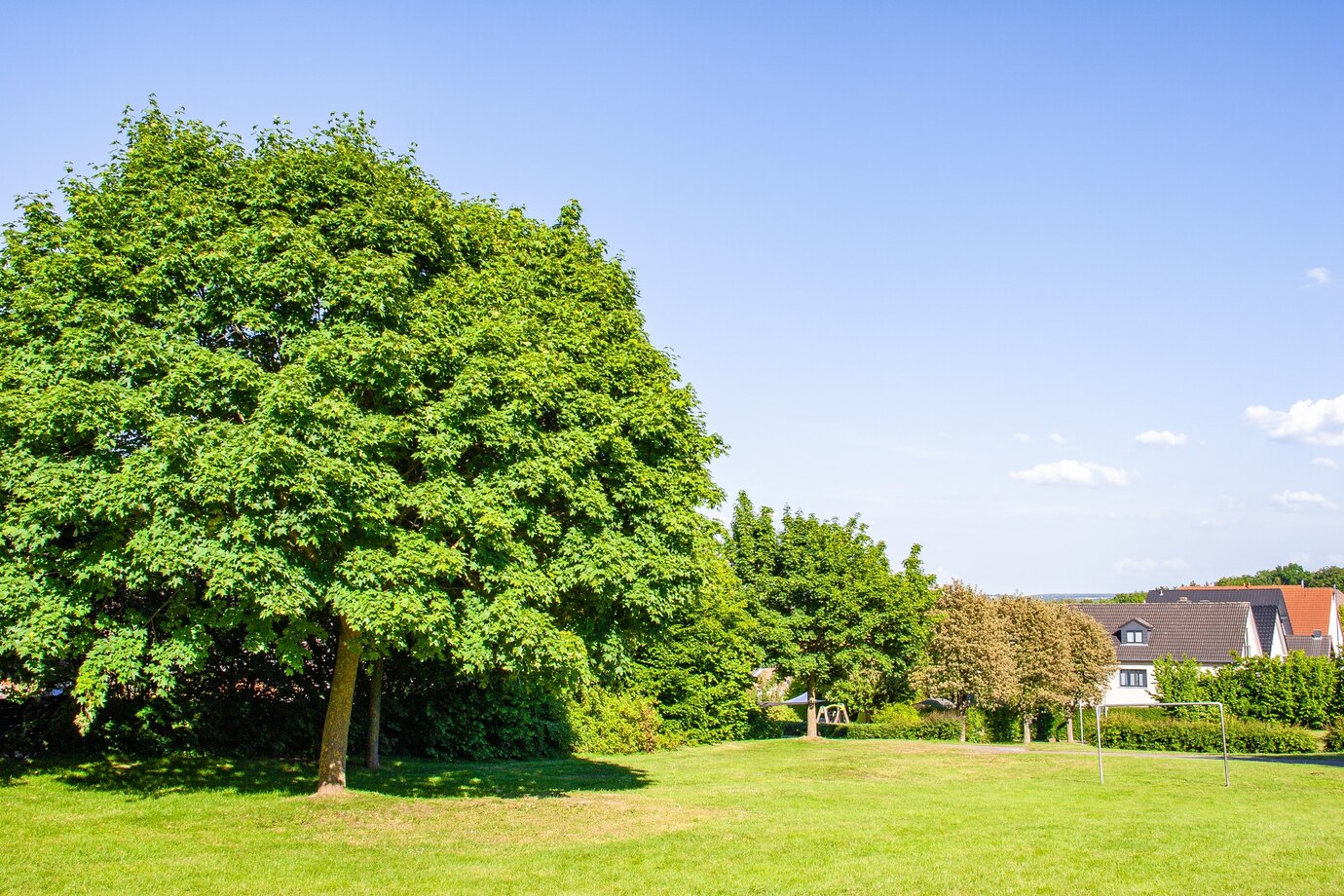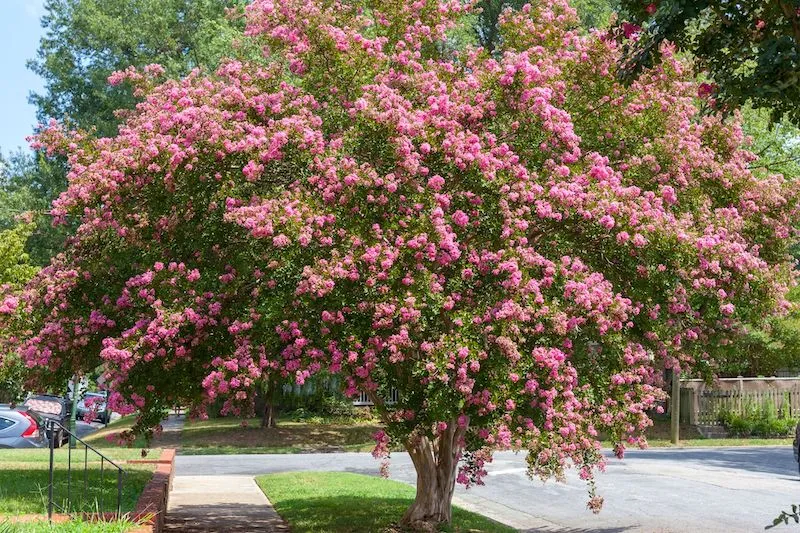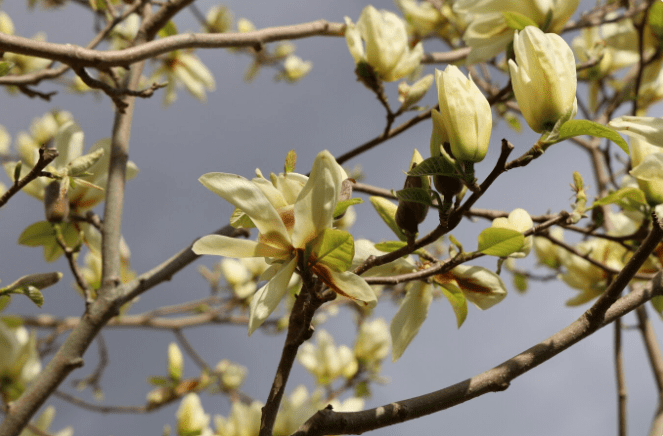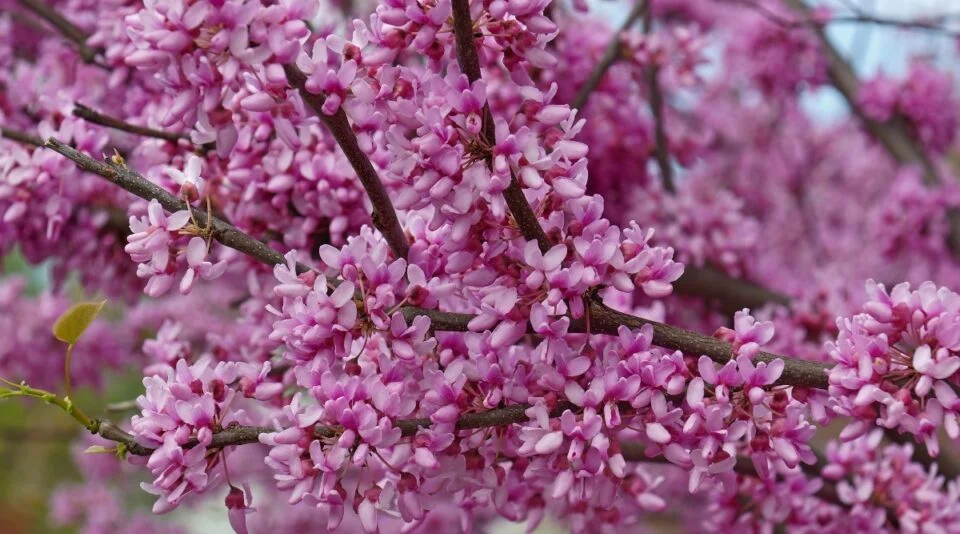Maple trees rank among the most popular ornamental and shade trees for good reason. Once established, they thrive with little to no maintenance, adding striking beauty to any landscape. Japanese and red maples stand out for their vibrant colors and showcase brilliant hues year-round or during fall.
Table of Contents
ToggleStunning Maple Tree Varieties
As a master gardener, I’ve always admired the beauty and versatility of maple trees. If you want to add one to your landscape, here are 15 stunning species.
Amur Maple (Acer ginnala)
The Amur maple grows as either a deciduous shrub or a small tree. It displays brilliant red and orange foliage in fall. In spring, it produces small and fragrant white flowers. It reaches up to 30 feet tall at maturity and is often used as a windbreak or privacy screen. However, Amur maples are considered invasive in some regions. Only plant them in permitted areas where seedlings can be managed or removed.
Big Leaf Maple (Acer macrophyllum)
Bigleaf maples, also known as Oregon maples, thrive in the Pacific Northwest and reach towering heights of 150 feet or more. In early spring, they produce clusters of small yellow flowers at the tips of their twigs. Their dark green lobed leaves transform into a brilliant yellow in the fall.
Hedge Maple (Acer campestre)
Hedge maple, or field maple, is a compact deciduous tree often found in urban landscapes. Its yellow-green leaves take on a rich red hue in fall, adding seasonal interest. At maturity, hedge maple grows 25 to 30 feet tall and thrives in various conditions. However, it is also considered invasive in some regions.
Hornbeam Maple (Acer carpinifolium)
Many species within a genus share similar traits, but hornbeam maple offers a unique surprise.
Instead of the classic palmate-lobed leaves, this species features elongated, lobeless foliage with pointed tips and a corrugated texture. Its green leaves turn yellow or brownish-gold in fall. This rare species makes an excellent small tree or large shrub in the landscape.
Japanese Maple (Acer palmatum)
The Japanese maple is a compact deciduous tree that grows as a single or multi-stemmed shrub. It develops a broad crown with hand-sized leaves featuring five to seven pointed lobes. In fall, its foliage transforms into stunning shades of gold, orange, maroon, and reddish-brown.
Norway Maple (Acer platanoides)
Norway maples thrive in partial shade to full sun and adapt to various soil types. With a columnar growth habit, they showcase vibrant golden-yellow foliage in the fall. They are considered invasive in several regions. Before planting, check local horticulture guidelines to ensure they suit your area.
Paperbark Maple (Acer griseum)
Paperbark maples get their name from their distinctive peeling, papery bark. Their dark green leaves have fuzzy undersides, transforming into a brilliant scarlet red in fall. They are slow-growing but eventually reach a mature height of 25 feet.
Red Maple (Acer rubrum)
Red maple is the most widespread maple species in the world. It comes from the red bark on new limbs and leaf stems. Its leaves have green tops and silvery undersides, turning a brilliant red in fall. At maturity, they grow up to 50 feet tall.
Silver Maple (Acer saccharinum)
Silver maples grow exceptionally fast, making them a popular choice for shade trees. They are named for the silvery undersides of their leaves, which shimmer in the wind. At maturity, they can reach up to 80 feet tall, and their shallow root system can spread aggressively. Their green leaves remain vibrant throughout the growing season, then turn pale yellow in the fall.
Sugar Maple (Acer saccharum)
The sugar maple is cherished for its role in maple syrup production and its breathtaking fall foliage. Its bright green leaves transform into a striking mix of red, yellow, orange, and green in autumn. They typically reach up to 80 and 110 feet tall.
Sycamore Maple (Acer pseudoplatanus)
Sycamore maples are named for their leaves, which resemble those of a sycamore tree. They form a dense, rounded crown with deeply lobed, dark green foliage that remains mostly green through fall. Unlike many maples, they tolerate salt well, making them ideal for coastal areas and roadside plantings. They typically reach 60 feet at maturity but can grow as tall as 100 feet.
Tatarian Maple (Acer tataricum)
Closely related to the Amur maple, this species typically grows as a small upright tree but can develop into a shrub if left unpruned. Young trees produce three-lobed leaves, while mature trees have unlobed foliage. In spring, greenish-white flowers bloom, followed by red samaras. Come fall, its leaves turn vibrant shades of yellow or red.
Vine Leaf Maple (Acer cissifolium)
The vine leaf maple has trifoliate leaves, meaning each leaf splits into three parts. Unlike classic maple leaves, its foliage resembles ivies or ash trees, earning it the nickname “ivy-leaved maple.” This small tree shares a similar shape and size with the Japanese maple. Its fall foliage varies, displaying shades of green, yellow, or red.
Trident Maple (Acer buergerianum)
The trident maple, a variety of red maple native to Asia, grows as a smaller tree with rounded branching. Its dark green, three-lobed leaves give it a distinctive look. It reaches a mature height of 25 to 35 feet.
Bloodgood Japanese Maple (Acer palmatum ‘Bloodgood’)
The Bloodgood maple is a popular variety of Japanese maple. It stands out with its deep red foliage, which is most vibrant in spring. Ideal for smaller yards, this tree thrives when planted in autumn. To protect its roots from extreme summer heat and winter cold, apply a layer of mulch around its base.

